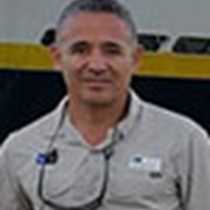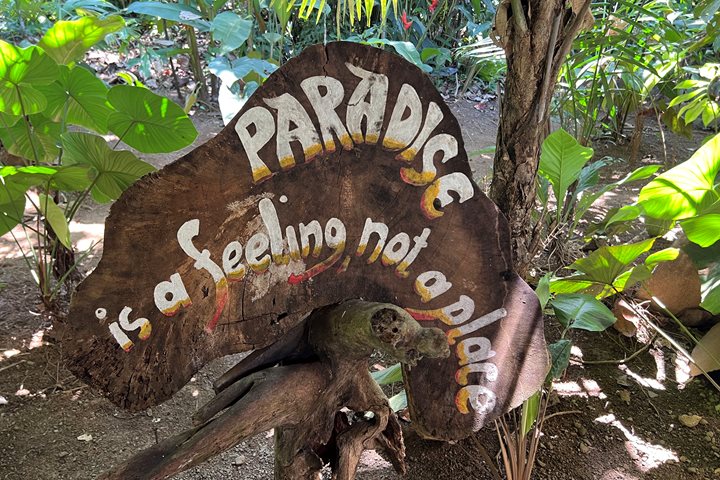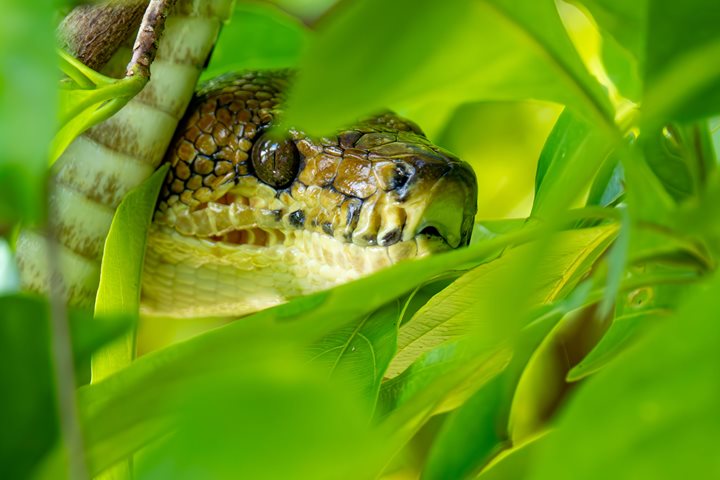After leaving the Gulf of Panama, National Geographic Quest made its way to Iguana Island, a wildlife refuge of pristine green and turquoise waters. Created in 1981, this protected area serves as a nesting site for enormous colonies of magnificent frigatebirds. These beautiful birds (Fregata magnifiscens) are extremely light in proportion to their size and wingspan. One individual weighs around 1400 to 1700 grams. Their sternums are fused, an adaptation that allows them to fly or glide easily by using the wind to take off and land. They are kleptoparasitic, which means they steal fish from other birds. They pick at another bird’s tail or wings, forcing that bird to let go of its catch, which the frigatebird takes while still in the air. Recently, the territory of the refuge was increased due to its ecological importance for coral reefs and the reproduction of humpback whales. During World War II, the United States used the island as a site to test bombs. When visitors walk the trails, it is easy to spot evidence of impact craters from those tests.
Many explorers decided to take a walk around the small island. They observed the individuals that give their name to the protected area, the omnivorous spiny-tailed ctenosaurus. The Halloween or Gecarcinus crab is the lizards’ favorite food. Whiptail lizards also caught people’s attention.
Nephila orb weaver spiders were building bidimensional nests along the trail. These powerful spider webs act like bulletproof vests. They are six times more resistant than steel with their fibroin protein.
Once we reached the other side of the island, we got closer to the frigatebird nests and heard the drum like sounds made during their courtship rituals. The males rub their bills against their inflated gular pouches. These birds are spectacular. There are only five species in this family, and we saw one of them up close and had the chance to appreciate its unique characteristics.
The landscape opened up, and we reached a deposit of columnar basalts. These geological, angular formations are carved when lava reaches the surface. When the outer crust of the flow cools off, it breaks into symmetrical figures as the inner flow, still molten, expands.
When we arrived back to our starting point, it was time to go for a swim. Guests observed fish species while snorkeling. We spotted pufferfish, a sea turtle, and rainbow wrasses along the reefs. Sunset was followed by a traditional recap and a lecture by Panamanian naturalist Gabe. Today was a wonderful day in Panama.









